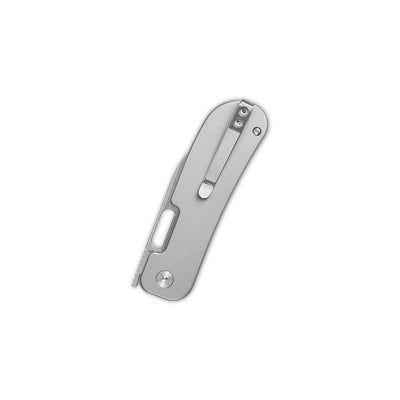The Evolution of Liner Lock Knives: A Comprehensive History
Body
The liner lock knife has become a staple in the world of folding knives, known for its reliability and ease of use. But what exactly is a liner lock, and how did it evolve into the popular mechanism we see today? This article delves into the history, mechanics, and significance of liner lock knives.

Understanding the Liner Lock Mechanism
A liner lock knife features a locking mechanism that utilizes a metal liner within the handle. When the blade is opened, a portion of the liner moves into place, securing the blade and preventing accidental closure. This design is not only functional but also enhances the knife's overall aesthetics.
- Durability: The liner lock mechanism is robust, making it suitable for various tasks.
- Ease of Use: One-handed operation is a significant advantage, allowing users to close the knife with minimal effort.
- Safety: The design minimizes the risk of accidental closure, making it a preferred choice for many knife enthusiasts.
The Historical Context of Liner Lock Knives
The concept of the liner lock was popularized in the 1980s by renowned knife designer Michael Walker. His innovative approach to folding knives introduced a new level of safety and functionality. Prior to this, many folding knives relied on simpler mechanisms, which often lacked the security that modern users demand.
As the demand for reliable and efficient knives grew, so did the popularity of the liner lock. Today, it is widely used by manufacturers around the globe. But how did this mechanism change the landscape of knife design?
Impact on Knife Design and Usage
The introduction of the liner lock mechanism revolutionized the way knives were designed and used. It allowed for:
- Thinner profiles, making knives more pocket-friendly.
- Enhanced blade retention, ensuring that the blade remains securely in place during use.
- Greater versatility, as the mechanism can be adapted for various blade shapes and sizes.
Modern Applications of Liner Lock Knives
Today, the liner lock knife is favored by outdoor enthusiasts, collectors, and everyday users alike. Its versatility makes it suitable for a range of activities, from camping to everyday carry (EDC). Many manufacturers, such as , offer a variety of models that cater to different preferences and needs.
Choosing the Right Liner Lock Knife
When selecting a liner lock knife, consider the following factors:
- Blade Material: Look for high-quality steel that offers durability and edge retention.
- Handle Design: Ensure the handle provides a comfortable grip and fits well in your hand.
- Size and Weight: Choose a knife that suits your intended use, whether for EDC or outdoor activities.
In conclusion, the liner lock knife has a rich history and continues to evolve, meeting the needs of modern users. Its combination of safety, functionality, and aesthetic appeal makes it a preferred choice for knife enthusiasts worldwide. Understanding its evolution not only enhances appreciation for this tool but also informs better purchasing decisions.









Comments